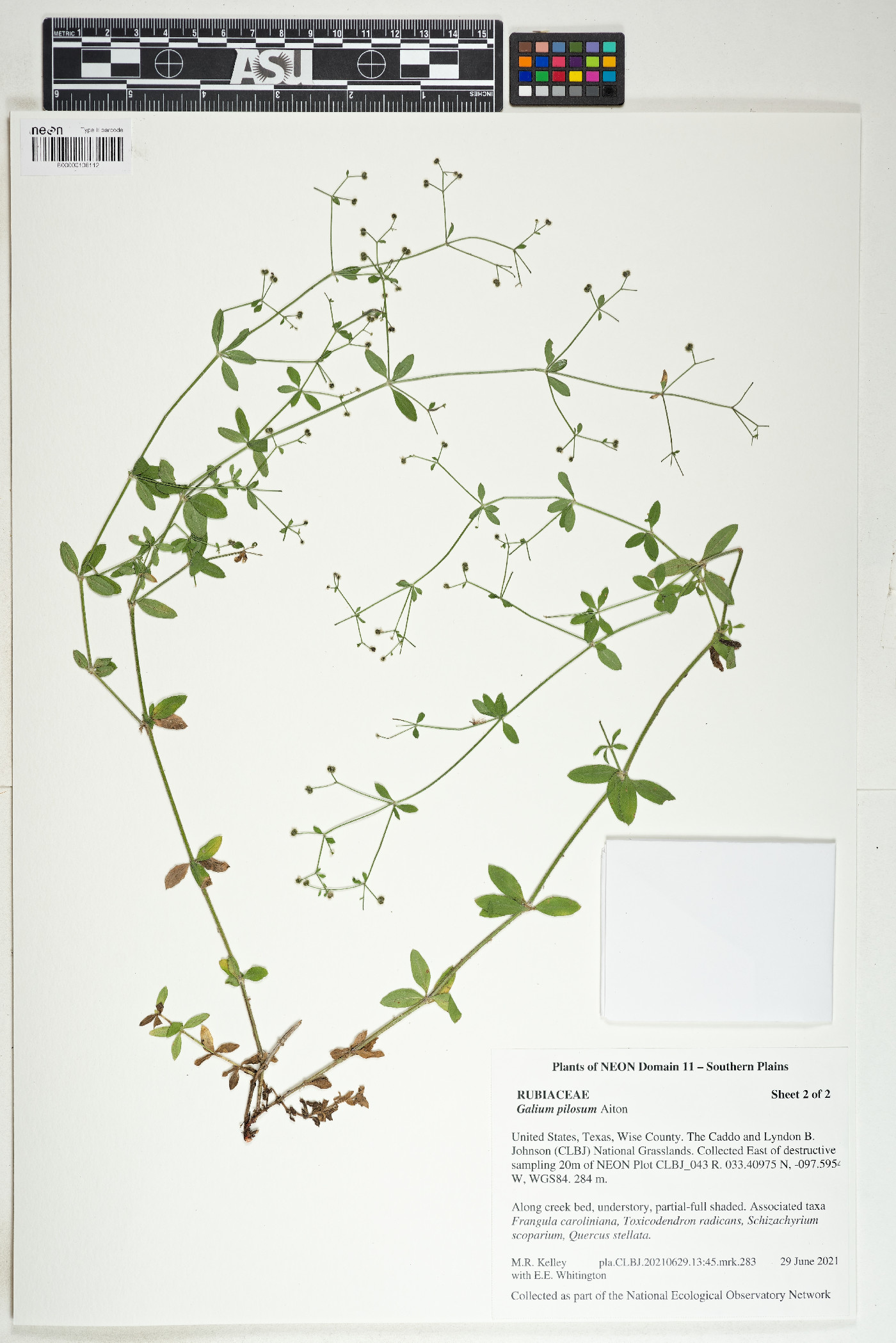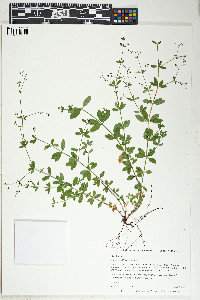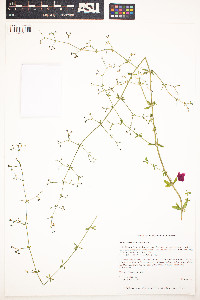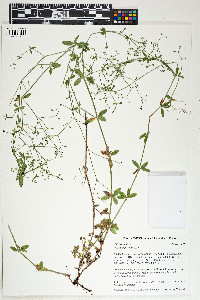Perennial herb with a creeping rhizome 20 cm - 1 m tall
Stem: upright or ascending, slender, four-angled, unbranched to often many-branched from base, more or less hairy.
Leaves: in whorls of four, numerous, 1 - 2.5 cm long, half as wide, elliptic to oval, three-veined, more or less hairy, and firm.
Inflorescence: a two- to three-forked, widely spreading cluster of flowers.
Flowers: terminating the branches of the inflorescence, distinctly stalked, greenish purple, 2 - 3 mm wide, more or less flat and circular in outline, with four short lobes. Stamens four, alternating with lobes, shorter than corolla. Styles two, short.
Fruit: dry, indehiscent, spherical, paired, separating when ripe, one-seeded, bristly.
Similar species: No information at this time.
Flowering: mid-June to mid-September
Habitat and ecology: Common in sandy Black Oak savannas. Also found in partial shade on dune slopes near Lake Michigan.
Occurence in the Chicago region: native
Etymology: Galium comes from the Greek word gala, meaning milk, referring to the plants that are used to curdle milk. Pilosum means "covered with long, soft hair."
Author: The Morton Arboretum




